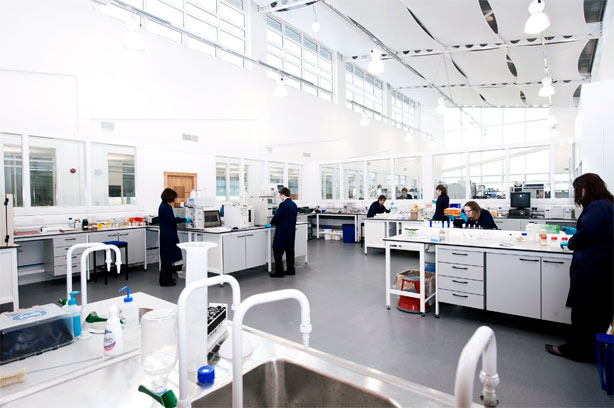Scavenging for sustainability
Published by Nicholas Woodroof,
Editor
Oilfield Technology,
Removing hydrogen sulfide (H2S) is a common concern in the offshore oil and gas industry as the highly poisonous, flammable and corrosive chemical compound can cause significant damage to wells, production equipment and pipelines if not managed effectively. It can also lead to considerably reduced production, with only sweet wells able to be produced.
Due to its hazardous nature, H2S levels must be closely monitored to ensure the health and safety of those on board, in addition to maintaining crude value and maximising production (Figure 1). However, each approach to remove and remediate the colourless gas has its associated financial and logistical challenges to consider.

Figure 1. Due to its hazardous nature, H2S levels must be closely monitored during offshore operations.
With many countries around the world setting targets to combat climate change, it is no longer enough to create solutions which simply offer efficiencies. Improving sustainability and reducing carbon footprint must be prioritised.
Space, productivity, and safety constraints
H2S scavengers are low-hazard, non-corrosive, specialised chemical compounds that remove sulfide species, which are typically injected directly into the sour production. As potentially large volumes of the water-based chemical are required, the scavenger is regularly transported offshore in chemical tote tanks so it can be injected directly or bunkered into facility tanks.
ChampionX, a provider of upstream and midstream oilfield chemistry programmes and services, was recently contracted by a major global operator to create and deploy a highly concentrated scavenger for a gas export line on a North Sea asset. While the operator’s incumbent product was working well, due to the large volume and concentration of H2S being treated, it required about 6000 litres of product per day. With limited onboard fixed storage and the remote location of the asset, the amount of scavenger required to meet demand was limiting full production. Storage of the tote tanks on deck was also affecting other activities and had the potential to cause a costly delay to an upcoming drilling campaign.
By the very restrictive nature of an offshore platform, H2S scavenger tote tanks can take up significant space, creating logistical issues and requiring regular movement for continued supply. On this particular asset, up to two 1000-gallon tanks were swapped daily to manage H2S levels in the gas export line, costing around US$3.5 million per year. Further, with approximately 2500 tpy of product being transported and stored on board, this had an impact on carbon footprint, which the operator was keen to reduce.
The winter months in the North Sea also created further challenges. With harsh weather and high sea states, transporting and moving H2S tanks offshore can cause potentially significant delays, meaning a safety stock of scavenger was always required on deck. For instance, to host 21 days of the product offshore, the operator required 30 tanks, which covered a substantial part of the platform’s laydown area. This was a key issue to resolve as the space was required for essential equipment for planned drilling and well operations.
The incumbent solution was also having a considerable impact on the asset’s production activities. The high volumes of H2S being produced had resulted in some wells being shut-in as the platform could not host the amount of scavenger required to treat them all.
ChampionX was therefore tasked with formulating a highly concentrated scavenger which could substantially reduce the volume required while delivering a more sustainable and efficient solution (Figure 2).

Figure 2. The creation of a highly concentrated H2S scavenger reduces volume and space constraints and improves efficiency and sustainability.
Shrinking carbon footprint
Chemists at the company’s laboratories in Aberdeen, UK, worked closely with the operator to create a bespoke, highly concentrated H2S scavenger, which would reduce the volume required and allow the operator to unlock production from the shut-in wells. The aim was to create a product that would increase scavenging capacity and critically, could maintain stability.
The R&D process took around one year, with long-term stability and compatibility testing conducted to ensure the product was reliable and solids did not form at varying temperatures (Figure 3).

Figure 3. ChampionX's laboratory in Aberdeen, UK, conducted testing to create a high-activity H2S scavenger.
The compatibility of materials was a vital element in its development. Depending on the asset, when H2S scavenger is injected into oil and gas processes, it meets numerous vessels and components, so the chemical cannot negatively affect the materials it is either contained in or injected into. It was therefore tested on a range of common oilfield rubbers and metals across varying standards.
Upon final testing under laboratory conditions, the company deployed its high-activity HSCV10610A scavenger product to the operator’s platform for definitive field testing.
Financial and environmental savings
Once applied, HSCV10610A scavenger delivered a range of cost and efficiency benefits over and above the incumbent product. This included:
- Annual cost savings of more than US$1 million through improved performance, while continuing to meet the same gas export H2S concentrations.
- Chemical volume was cut by 1.35 million litres per year, which lowered tank changeovers and its associated tasks. This resulted in two man-hours saved per shift with an annual resource benefit equivalent of US$64 000.
- A 70% reduction in the number of H2S scavenger tote tanks shipped - a yearly saving of US$162 000 in tank rentals.
- It also freed up 3.5% (23 m2) of all available vessel space per sailing.
Operationally, it allowed the operator to re-start production on the previously shut-in wells. Also, with a higher concentration of scavenger in smaller sized tanks, invaluable space on the pipe deck was reclaimed before an essential drilling campaign and freed up laydown space on the platform for other operations (Figure 4).

Figure 4. HSCV10610A allowed the operator to restart production on shut-in wells.
However, it is the environmental savings that are the most notable as the adoption of HSCV10610A has significantly reduced road and sea transport costs and avoided the production of 231 metric tpy of CO2, drastically shrinking the operator’s carbon footprint.
The product continues to be used and has now become an industry standard for the safe, efficient, and sustainable removal of H2S in the North Sea.
Read the article online at: https://www.oilfieldtechnology.com/hse/14072021/scavenging-for-sustainability/
You might also like
McDermott awarded offshore contract by Brazil's BRAVA Energia
Under the contract scope, McDermott will execute the transportation and installation of flexible pipelines, umbilicals and associated subsea equipment for two new wells at the Papa-Terra field and two new wells for the Atlanta Phase 2 development.

